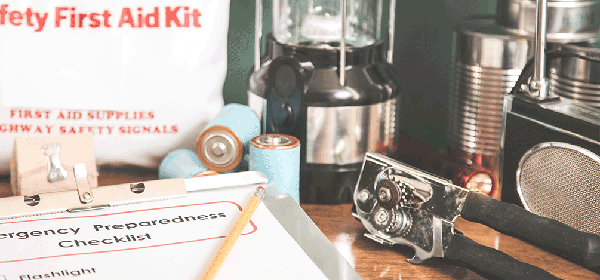It’s National Preparedness Month: Help clients make emergency plans for home and business
September is National Preparedness Month. Sponsored by FEMA (Federal Emergency Management Agency), National Preparedness Month reminds us to take steps to prepare for emergencies in our homes, businesses, schools, and communities – whether natural or manmade disasters. As their insurance agent, you can help your personal and commercial lines clients consider what preparation steps they need to consider as they create their emergency plans, whether they’re just a mental checklist for the family or a written business plan.
Let’s face it: Although we watch the nightly news and look with sympathy at wildfires and flooding in other parts of the country, and terrorist attacks in Europe, we don’t stop to consider what we would do if it happened to us. That’s why this year’s theme is “Disasters Don’t Plan Ahead. You Can.”
So, at the risk of sounding like doomsday preppers, we’re passing along information from FEMA that will help you and your insurance clients prepare for a variety of natural or manmade disasters. First, there are a number of materials available from FEMA’s website that you can pass along to your clients: graphics, instructional videos, suggested social media posts and emergency preparedness publications that you can print and provide clients. There’s even space on the back of the brochures for you to add your logo and contact information, if you’re handy with editing a PDF.
Helping personal lines clients create emergency plans
The materials include these basic steps:
1. Create a kit of emergency supplies. The kit includes items such as one gallon of water per person per day, a three-day food supply, can opener, flashlight, first aid kit and more. View the list or download, print and distribute it.
2. Make plans for various scenarios: A communications plan in case the disaster happens during the day while parents are at work and kids are at school or daycare. A shelter-in-place plan in case it’s safer to stay put and create as tight a barrier as possible between yourself and outside air. A getaway plan when it’s safer to leave than stay put, with various routes and destinations predetermined. And finally, parents need to know their kids’ schools’ plans.
Helping commercial clients create emergency plans
FEMA’s materials for businesses go several steps further, outlining additional steps that businesses should take to prepare for emergencies.
“Every geographic location presents a different set of hazards. Along the West Coast, it’s earthquakes and fires,” said Steve Goebel, business development manager for Residential Earthquake. “Along the East Coast and Gulf Coast, it’s hurricanes, wind and flooding. And in between it’s tornadoes, flooding and more. Add to that the recent confrontations with North Korea – and it’s easy to see that emergency planning is very important.”
“Your client’s business will be better prepared if they put emergency procedures in place, with key considerations for employees and customers,” added Paul McIntosh, vice president of marketing for Workers’ Compensation. “Not only are they protecting their people – they’re also protecting their business investment and increasing their company’s ability to survive.”
Related: What’s your insurance agency back-up plan?
In creating emergency plans during National Preparedness Month, help clients consider these issues:
Employee communication. Have an emergency plan in place that provides for two-way communication: how management will contact employees, and how employees can talk to you. Include in the plan any special assistance needed for older or special needs workers.
Outside communication. Communication is a two-way street here as well: How will your clients’ top staff communicate with local/state/federal authorities, customers, suppliers, partners and the general public? And if employees are best served by sheltering in place, there needs to be a battery-powered radio and NOAA weather radio to gather information from the outside.
Continuity planning. If a risk assessment and loss management plan is in place for your clients, they have the data they need to create a working emergency plan: the company’s various workflows and business process flow charts and a list of equipment, key people procedures and materials necessary to keep the company operating. Plans should be in place that create alternative workflows when breakdowns happen at any point.
Emergency supplies. FEMA’s list includes water, food, both a battery-powered radio and a NOAA weather radio with an alert function, extra batteries, a flashlight, first aid kit, whistle, wrench or pliers to turn off utilities, filter mask, plastic sheeting and duct tape in the event of airborne chemical hazards and moist towelettes, garbage bags and plastic ties for personal sanitation. Printed building plans and site maps with exit routes should be included as well. FEMA also suggests keeping copies of critical records such as insurance policies, employee contact lists, bank account records, supplier and shipping contact lists, computer backups, emergency or law enforcement contact information and other priority documents in a waterproof, fireproof portable container. Store a second set of records at an off-site location.
Related: Does Your Agency Have a Disaster Recovery Plan?
Securing the building. Here we’re talking smoke alarms / detectors and fire extinguishers to protect against fire threats. Building security (locks, lighting, security alarms, perimeter fencing) as well. Additionally, your clients should plan for utility disruptions: What happens when these are non-functioning for days after a disaster? What alternatives such as back-up generators are in place?
View more details in FEMA’s “Every Business Should Have a Plan” brochure. Additionally, here are links to more FEMA materials:

